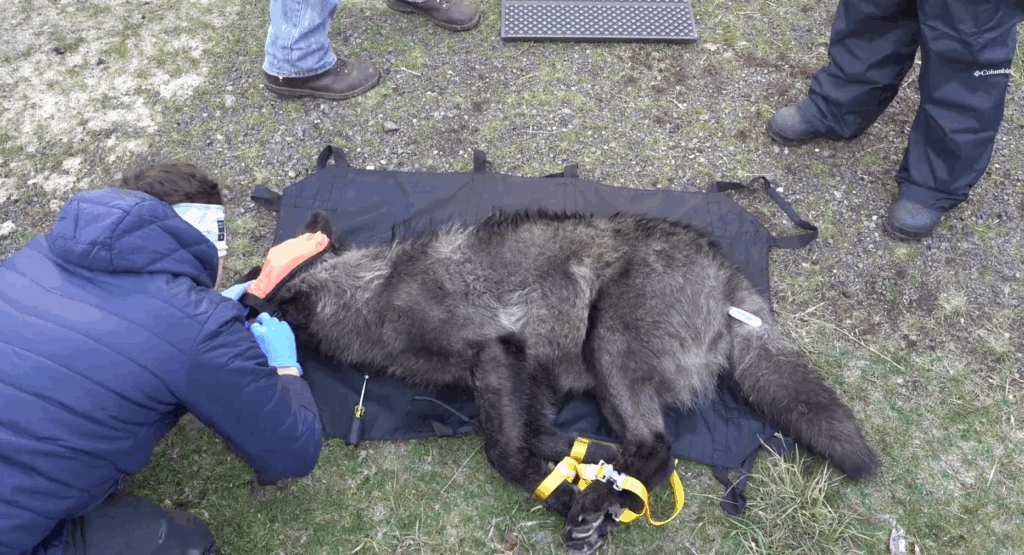Republicans push bill to thin forests and limit lawsuits during wildfire prevention
WASHINGTON – Republican members of Congress promoted their solution to Western wildfires during a hearing in Washington, D.C., Wednesday while Colorado forestry officials plot a road to recovery from losses this year.
The Wildfire Prevention and Mitigation Act would authorize an aggressive campaign to thin forests and remove flammable underbrush in fire-prone areas.
Environmental groups called the bill a giveaway to forestry companies. The bill would authorize the companies to do much of the forest thinning and to use the timber they cut away for their businesses.
The U.S. Department of Agriculture estimates that 8.82 million acres have been burned by wildfires this year. Some of them continue to burn in California and Oregon.
“To put this in perspective, that’s nearly seven times the state of Delaware, 12 times the state of Rhode Island,” said U.S. Sen. John Barrasso, R-Wyo., chairman of the Senate Committee on Environment and Public Works. “The cost of these fires is real. Lives are lost and family history and livelihoods are destroyed in an instant.”
Other provisions of the Wildfire Prevention and Mitigation Act would discourage lawsuits against the U.S. Forest Service and U.S. Bureau of Land Management when their efforts to manage forests threaten wildlife. Instead, anyone opposing their actions would be forced to accept speedier arbitration decisions.
The bill would assign the Agriculture Department to take immediate action to prevent fires when plant disease or insect infestations create flammable dead wood or when watersheds risk having vegetation stripped away by wildfires.
The bill also seeks to protect some wildlife habitat threatened by fires, particularly for sage grouse and mule deer.
The Insurance Information Institute ranks Colorado third among the states for fire risk behind California and Texas. About 366,200 Colorado homes are at risk from wildfires this year, the Institute reported.
Colorado’s fire prevention efforts this year were led by the Bureau of Land Management, which reported that it treated more than 23,000 acres in the state by removing potential fuels for flames. The fuels typically mean dry underbrush and dead or fallen trees.
About 90 percent of the acreage the Bureau of Land Management treated in Colorado was within its “Wildland Urban Interface,” which refers to potential fire zones between unoccupied land and human habitation areas. The other 10 percent of the treatment projects were designed to protect healthy ecosystems.
An example of fire prevention treatment created smoke over the Pike National Forest this week near Denver. Fire crews intentionally burned about 200 acres along Trout Creek to get rid of dry underbrush.
Also this week, the Colorado State Forest Service announced it would give out matching grants to help communities restore damaged forests and to reduce wildfire risks.
Local governments, utilities and nonprofit groups could be granted as much as half the cost of equipment or other expenses for their forestry management projects.
During the Senate hearing Wednesday, Dylan Kruse, policy director for the environmental group Sustainable Northwest, expressed concerns about provisions in the Wildfire Prevention and Mitigation Act that might reduce habitat for endangered species.
Some of the endangered birds and other animals live in areas where the forest could be thinned to prevent fires.
The bill would reduce requirements for Environmental Impact Statements and give the Forest Service greater authority to decide when to thin forests.
Kruse said he understood the need for prompt action and efficiency but “arbitrary page limits and deadlines for document production are unnecessary.”
Environmentalists raised similar concerns about a bill co-sponsored this year by Colorado U.S. Rep. Scott Tipton, R-Cortez, called the Resilient Federal Forests Act. It also would have made it easier for forestry companies to thin wooded areas at risk of wildfires.
Bill Crapser, the Wyoming State Forester, said he generally supported the Wildfire Prevention and Mitigation Act, but asked for more state input.
“We would ask that the committee consider language which would encourage federal managers to consult their state’s forest action plan and work closely with the state foresters to ensure federal resources are focused on the highest priorities,” Crapser said in his testimony.
He also warned that if fire seasons continue to be as bad as this year, state forest services will deplete their funding by extinguishing flames but have no money left for wildfire prevention.
Shortly before the Senate hearing, the Government Accountability Office issued a report predicting worsening wildfires and other climate hazards caused by global warming.
Extreme weather and wildfires cost the federal government more than $350 billion in the past decade, the GAO reported. It attributed $34 billion to “wildland fire management.”
The GAO added, “According to a May 2014 assessment by the U.S. Global Change Research Program, the impacts and costs of extreme events-such as floods, drought, and other events – will increase in significance as what are considered rare events become more common and intense because of climate change.”











